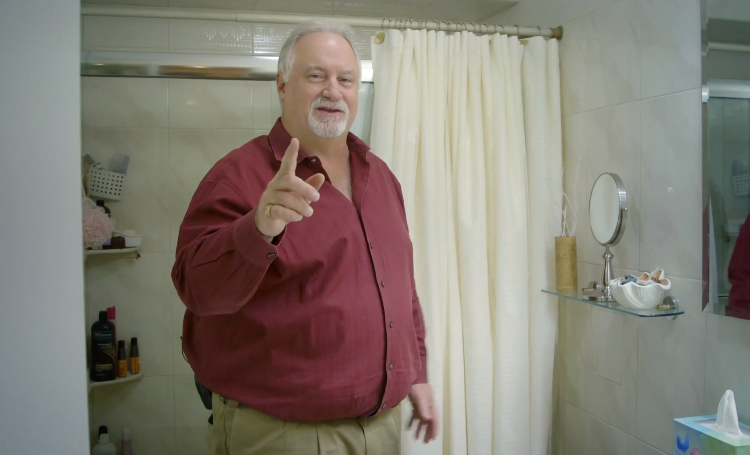Sponsored Content Brought To You By Alure Home Improvements
Let’s face it: for many Americans the bathroom is the first or second most popular place in their home. Certainly, it’s where they spend a lot of their time, whether they want to admit it or not. But you can bet they’ll be the loudest to complain when something goes wrong with the bathroom plumbing. Nobody likes to hear about toilet troubles.
But trust Doug Cornwell, chief operations officer of Alure Home Improvements, to get right down to it in this latest installment of Alure Home Improvements’ “60 Second Fix.”
“The issue we have today is the water closet, the commode, the toilet,” explains Cornwell. “A couple of things could happen here: If the water is constantly running, the water level may be too high on the inside. Or if it’s not flushing properly, the water level may be too low.
“So what we want to do is take a look at the water level,” he advises, “and make sure it’s at the proper height so the commode functions efficiently.”
The principle at work is that the toilet tank should store enough water so that when the fluid is released all at once through the flush tube, the volume can flush the toilet bowl clean much faster and more efficiently than the more diminutive flow from the small diameter supply pipe that fills the tank back up. A trickle doesn’t cut it.
The problems come when the storage tank either doesn’t have enough water in it so the toilet doesn’t get the job down, or there’s so much water that it’s spilling into the overflow tube, triggering the supply pipe to run constantly in a losing proposition. You don’t want to waste this resource. It can add up on your water bill until you’re basically throwing money down the toilet. And if you have a septic system, eventually the constant water flow will fill it up until it has to be pumped out.
Cornwell starts by lifting the lid off the toilet tank, and he spots the problem immediately. It’s like high tide in there. The water level is almost even with the overflow tube. That’s not what any homeowner wants to see. But the solution is within reach.
Let’s look inside the tank for a minute and get acquainted with the equipment. The hollow vertical tube usually found sticking up near the center of the tank and almost as tall as the tank is called the overflow tube. The toilet flush valve assembly is nearer the handle. It has a float attached to it that rises and falls as the water is either flushed out or flowing back in from the little water refill pipe. To raise the water level in the tank, raise the float; to lower the water, lower the float.
“We want to adjust this float to a point where it shuts the water off before it gets too high,” says Cornwell.
The adjustment shaft that controls the float is a thin rod with a cross notched on the end of the shaft designed for a Phillips screwdriver. Turning the shaft clockwise raises the float, twisting it counterclockwise lowers the float.
Some tanks have a clear marking for optimum water usage. If it isn’t obvious, then make sure the water level is about an inch or less below the lip of the overflow tube. If there’s not enough water in the tank, then the toilet won’t flush effectively—and that could lead to a messier problem down the line.
In this example, Cornwell turns the shaft clockwise to raise the float. “When the float is in the down position, the water runs,” he says. “When the float comes up, it’s going to shut the water off.”
Click here to learn more about Alure Home Improvements
As he demonstrates, once the toilet goes through its flush cycle properly, the water will rise in the tank to the correct level and shut off. Sometimes, you may have to do a couple of test runs before you’re satisfied that the water has risen to the appropriate level.
We take it for granted until it doesn’t work but have you ever wondered who designed the toilet? It turns out that Joseph Bramah, an Englishman, patented the float valve system for the flush tank in 1778. But George Jennings, his later compatriot, gets the credit for popularizing the flush toilet in the 19th century at the Great Exhibition at Hyde Park, where visitors paid a penny to use what he called his Monkey Closets, the first public toilets ever installed. Thomas Crapper, whose name is often associated with the toilet, was a leading British manufacturer in the late 19th century, not the original inventor.
And that’s something to think about the next time you ever need to make an adjustment to your toilet. And thanks to Doug Cornwell, you can do it in 60 seconds or less!

























